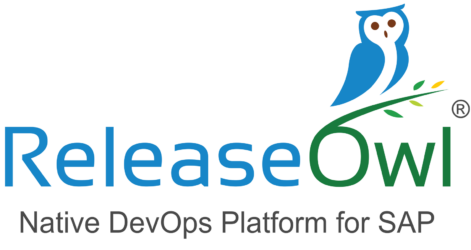SAP Disaster Recovery
Filter By
Browse By
- SAP Analytics and AI
- SAP Application Development and Integration
- All SAP Application Development and Integration
- SAP ABAP
- SAP ABAP Development Tools
- SAP ABAP Test Cockpit
- SAP API Management
- SAP BAPI
- SAP Basis
- SAP BRF
- SAP Business Application Studio
- SAP CMS
- SAP Design Studio
- SAP Development Tools
- SAP DevOps
- SAP EAI
- SAP EDI
- SAP Extension Suite
- SAP Fiori
- SAP Fiori Elements
- SAP Integration Suite
- SAP Low Code Application Development
- SAP Low Code Automation
- SAP Netweaver
- SAP Release Management
- SAP UI5
- SAP Web Application Server
- SAP Web IDE
- SAP Business Process Management
- SAP Center of Excellence
- SAP CIO
- SAP Customer Experience
- SAP Data and Data Management
- All SAP Data and Data Management
- SAP BW
- SAP BW/4HANA
- SAP Crystal Reports
- SAP Data Archiving
- SAP Data Center
- SAP Data Governance
- SAP Data Integration
- SAP Data Migration
- SAP Data Quality
- SAP Data Services
- SAP Data Strategy
- SAP Data Visualization
- SAP Data Warehouse Cloud
- SAP DMS
- SAP Document Control
- SAP EIM
- SAP ETL
- SAP ETL Tools
- SAP HANA
- SAP HANA Administration
- SAP HANA Deployment Infrastructure
- SAP HANA Studio
- SAP Master Data
- SAP Master Data Governance
- SAP MDM
- SAP Enterprise Architect
- SAP Enterprise Asset Management
- SAP ERP
- SAP Finance
- All SAP Finance
- SAP Accounting
- SAP AR AP
- SAP Asset Accounting
- SAP Billing Systems
- SAP BPC
- SAP BRIM
- SAP Cash Management
- SAP Central Finance
- SAP Controlling
- SAP COPA
- SAP Cost Center Accounting
- SAP Currency Risk
- SAP e-invoicing
- SAP FICO
- SAP Finance Automation
- SAP Advanced Financial Closing
- SAP Financial Consolidation
- SAP Financial Planning
- SAP FX Risk
- SAP General Ledger
- SAP Global Tax Management
- SAP Hyperion
- SAP Order to Cash
- SAP Payment Processing
- SAP Profitability Analysis
- SAP Rebate Management
- SAP S/4HANA Finance
- SAP SWIFT Compliance
- SAP Treasury Management
- SAP Universal Journal
- SAP Governance Risk and Compliance
- SAP Human Capital Management
- SAP Intelligent Technologies
- SAP Platform and Technology
- All SAP Platform and Technology
- SAP Business Technology Platform
- SAP Cloud
- SAP Cloud Connector
- SAP Cloud Integration Platform
- SAP Cloud Migration
- SAP Cloud Platform
- SAP Cloud Providers
- SAP Cloud Strategy
- SAP Digital Signature
- SAP Container Platform
- SAP HANA Enterprise Cloud
- SAP Digital Asset Management
- SAP Smart Forms
- SAP HEC
- SAP Digital Integration Hub
- SAP Hyperscalers
- SAP Infrastructure
- SAP Messaging
- SAP Quality and Testing
- SAP Security
- SAP Spend Management
- SAP Supply Chain Management
- All SAP Supply Chain Management
- SAP APO
- SAP Asset Management
- SAP Business Network
- SAP Digital Manufacturing Cloud
- SAP Digital Twin
- SAP EWM
- SAP IBP
- SAP Inventory Management
- SAP Label Printing
- SAP Logistics
- SAP Manufacturing
- SAP Manufacturing Automation
- SAP MES
- SAP MII
- SAP MM
- SAP MRO
- SAP MRP
- SAP Order Management
- SAP Plant Maintenance
- SAP PLM
- SAP Production Planning
- SAP S&OP
- SAP SD
- SAP SPM
- SAP Supply Chain Planning
- SAP Track and Trace
- SAP Transportation Management
- SAP System Administration
What is Disaster Recovery?
Disaster recovery is an organization’s method of regaining access to and functionality for its IT infrastructure following disruptive events, such as major equipment failure, natural disaster, cyberattack, or pandemic. It relies on the backup of data and computer processing capabilities at a remote location not affected by the disaster. In a disaster, the organization can restore data and computing functions to continue operations.
Disaster recovery focuses on IT systems supporting critical business functions instead of business continuity, which involves keeping all essential aspects of a business functioning despite significant disruptive events. Priorities and recovery time objectives should be developed during the business impact analysis. Technology recovery strategies should be designed to restore hardware, applications, and data in time to meet the business recovery needs.
What is Disaster Recovery?
Disaster recovery is an organization’s method of regaining access to and functionality for its IT infrastructure following disruptive events, such as major equipment failure, natural disaster, cyberattack, or pandemic. It relies on the backup of data and computer processing capabilities at a remote location not affected by the disaster. In a disaster, the organization can restore data and computing functions to continue operations.
Disaster recovery focuses on IT systems supporting critical business functions instead of business continuity, which involves keeping all essential aspects of a business functioning despite significant disruptive events. Priorities and recovery time objectives should be developed during the business impact analysis. Technology recovery strategies should be designed to restore hardware, applications, and data in time to meet the business recovery needs.
What is SAP Disaster Recovery?
SAP offers standard and enhanced disaster recovery service for SAP Business Technology Platform (SAP BTP), Neo environment. Data backups are stored at a disaster recovery site and contain all data stored in the SAP BTP’s data management and document services. According to SAP, any data not stored in these services cannot be recovered.
The SAP BTP Enhanced Disaster Recovery service provides asynchronous data replication to a remote disaster recovery region to improve the time for recovery. The service requires hardware setup and covers production applications running on SAP BTP in disaster recovery-enabled subaccounts. The setup requires configuration steps that the organization and the dedicated SAP team must perform in advance.
Further Resources for SAPinsiders:
Considerations for Disaster Recovery and Automated Failover Clusters for SAP HANA Infrastructures. In this SAPinsider Q&A, SUSE’s Peter Schinagl, Technical Architect, and Markus Gürtler, Technical Alliance Manager, answer questions regarding disaster recovery scenarios for SAP HANA infrastructure, automation solutions for failover, and system replication.
A Step-by-Step Configuration Guide for Disaster Recovery. In this article, Muhammad Abdul Jamil, SAP Basis Administrator at the Orient Group of Companies, provides a detailed step-by-step guide on setting up a standby database of the SAP production server for disaster recovery.
Other vendors offering SAP disaster recovery services: AWS, Commvault, Google Cloud, NetApp, and Syntax.
327 results
-

 Premium
Premium
Identify Your Key Business Risks in a Collaborative Process Involving All Stakeholders in Your Enterprise
Reading time: 14 mins
Learn about the second phase in the enterprise risk management (ERM) process, risk identification. The knowledge about your business risks is spread across your organization and lines of business. A collaborative approach is required to identify and document all risks threatening your enterprise involving many different stakeholders. Discover how SAP BusinessObjects Risk Management 3.0 provides...…
-

 Premium
Premium
Increase the Success Rate of Your Strategies and Initiatives through an Enterprise Risk Management System
Reading time: 13 mins
Many risk managers complain about a lack of enterprise insight and alignment of risk management to the strategic objectives of their organization. With a rather manual and inconsistent approach based on emails and spreadsheets, they often fail to oversee the impact of risks to the strategic goals and whether appropriate risk responses were implemented to...…
-

 Premium
Premium
Changes Are Coming to Healthcare: Is Your ERP System Ready?
Reading time: 8 mins
ManagementAs the stormy economy continues to batter even the sturdiest businesses, even healthcare companies are feeling under the weather. However, while many are cutting back on IT spending, there are positive signs for SAP professionals as the industry continues its march to modernization. The federal stimulus package focused considerable public attention on technology and the...…
-
-

 Premium
Premium
Effectively Respond to Your Business Risks and Evaluate Residual Risk Levels
Reading time: 14 mins
Examine the fourth phase of the enterprise risk management (ERM) process: risk response allocation. See how in SAP BusinessObjects Risk Management you can distinguish between various response types and involve response owners in a collaborative process to increase accountability for response implementation. In addition to assessing response completeness and effectiveness, you can conduct a residual...…
-

 Premium
Premium
3 Time-Saving Results of Using SAP HANA with SAP NetWeaver BW
Reading time: 10 mins
ManagementGain an understanding of how using SAP HANA as part of SAP NetWeaver BW may reduce the time IT and your system spend on data loading, maintenance, and modeling. Traditionally, most of the cost associated with managing and maintaining a data warehouse has been in the time and staffing it takes for IT departments to...…
-

 Premium
Premium
3 Approaches to Create Global Ad-Hoc Queries
Reading time: 13 mins
Learn the details on how you can transport user-defined ad-hoc reports from development to quality to production in your SAP ERP HCM implementation. Follow this process when you want certain reports (queries) transported and available to all users in all environments. For example, this approach is useful if you create a report in ad-hoc, but...…
-

 Premium
Premium
Spotlight: An SAP Security Architect Comments on Methods to Keep SAP HANA Secure
Reading time: 8 mins
SAP Professional JournalIn this question-and-answer article, you’ll learn what measures to take to secure SAP HANA-based applications. SAP HANA environments typically have far more users directly accessing back-end systems than conventional environments. Therefore, it is critical to configure effective audit policies to monitor actions that include SELECT, INSERT, UPDATE, DELETE, EXECUTE, and other SQL statements...…
-
-

 Premium
Premium
How to Migrate SAP NetWeaver BW onto HANA for Comprehensive Analytics
Reading time: 12 mins
Learn the three methods for migrating SAP NetWeaver BW 7.3 to SAP HANA and the key modeling considerations to ensure efficient migration. Understand the function of the BW Migration Cockpit for BW on HANA, which allows for control of migration and maintenance through one feature. Key Concept HANA Live contents are prebuilt HANA models delivered...…
-

 Premium
Premium
Sneak Peek: Sustainable Procurement as an Embedded Process in Supplier Management Activities
Reading time: 8 mins
The Sustainability Executive Advisory Committee (EAC) of SAP is developing several roadmaps to enable functions and processes to address corporate sustainability reporting (CSR), planning, and monitoring activities. Stay ahead of the curve on sustainability by previewing these conceptual roadmaps and the expected releases of related SAP functionality. Key Concept Sustainable procurement processes can be embedded...…
-

 Premium
Premium
SAP BW Version Management: A Nifty Feature of SAP BW Objects
Reading time: 13 mins
Learn the steps needed to leverage the Version Management feature of SAP BW objects. Using Version Management, a little-known SAP BW option, you can automatically or manually create different versions of SAP BW objects and perform version comparisons and version recovery. This allows you to restore an object to a prior state. Key Concept In...…
Become a Member
Unlimited access to thousands of resources for SAP-specific expertise that can only be found here.
Become a Partner
Access exclusive SAP insights, expert marketing strategies, and high-value services including research reports, webinars, and buyers' guides, all designed to boost your campaign ROI by up to 50% within the SAP ecosystem.
Upcoming Events
Related Vendors
Your request has been successfully sent


